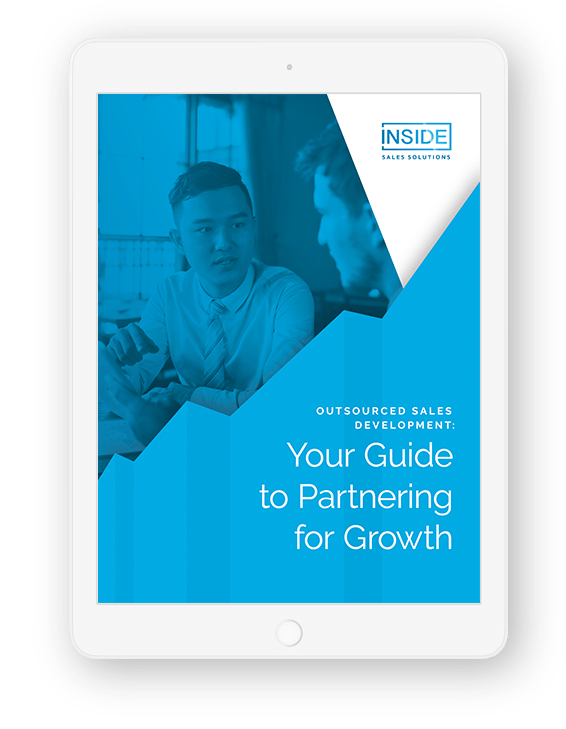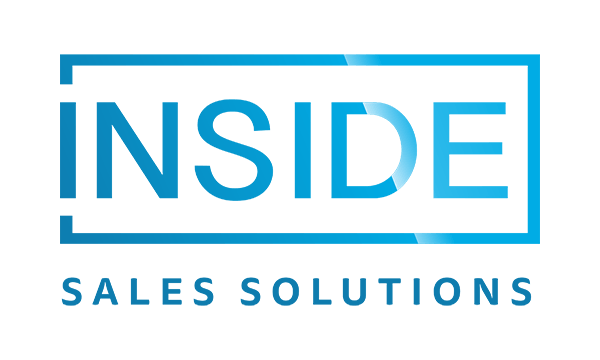Every successful event is powered by a great event marketing strategy!
When it comes to generating leads, events are worth their weight in gold. It’s no wonder organizations have become heavily invested in swiftly shifting from in-person to virtual events to maintain this lead generation momentum.
The numbers don’t lie.

With lead generation ranking as a top priority for marketers, events won’t be going anywhere anytime soon.
But anyone can host an event, not everyone can host an event people really want to attend. That’s why your event marketing plan is impactful.
Get the Ultimate Guide to Maximizing Channel Sales
Setting yourself and your event up for success requires a plan of action. We’ve got the steps to get you started and the practical tactics that will make your next event a lead generator.
Creating Your Event Marketing Plan
Developing a comprehensive event marketing plan is like putting the bumpers up before you bowl. Acting as a promotional guardrail, your overarching plan will help to guide individual event strategy by setting the parameters for what would and should be included.
It’s important to remember that every event will look a little different based on a variety of factors including: event type, whether you are hosting or attending, and size. Your event marketing plan should include enough flexibility to meet these varying requirements while still holding your team to a specific standard.
No matter what, your event marketing plan will consist of three main sections:
- Pre-event
- Event
- Post Event
Once you’ve formulated your plan, what you decide to include or exclude for individual events will be based on the event itself and how you feel you can best meet your event-based goals.
Before the Event
This is the time when the majority of your efforts will take place. The lead up to the event is your golden hour for maximum lead generation.
1. Set Your Goals
Since the goal for your event is to generate interest in your brand and/or your product (whether through lead generation for new business, or up-selling and cross-selling opportunities for existing) your event marketing will probably be focused on registrations and attendance. More bodies at the event = more interest in you.
But since you can’t really measure against “we want more attendees,” you will likely need a little more specificity. This is where SMART goals come in. By making goals specific, measurable, attainable, relevant, and time-oriented, you set yourself up with clear outcomes against which your event marketing can be measured and analyzed.
How to Make it a Lead Generator?
Making your event a lead generator requires a laser focus from the start. Orient your entire plan around this by selecting goals specific to your lead generation efforts.
2. Determine Your Audience
While you may not be able to necessarily “select” your audience for every event – like a major tradeshow you’re attending – understanding the “who” behind your communications and promotions is a critical step to achieving success.
Whether your audience is selected for you, or you have the capacity to make the decision yourself, do your research. Get to know your audience – how they speak, what they care about, what their pain points are, why they would want to attend this event. Relevance is key to creating a contextualized conversation that your new leads will want to continue with after the event.
How to Make it a Lead Generator?
The right audience can make a huge difference. Will decision makers or influencers be in attendance? Is most of the audience familiar with your brand or will you be “introducing” yourself to many of them? Look for opportunities and audiences that you haven’t explored recently, this could be your moment to expand your reach and market share.
3. Select Your Promotional Channels
The options for promotional opportunities can seem vast and endless, but a good place to start is back up with step 2. If you’ve done your research and know your audience, you’re likely to know where your audience is actively engaged.
Of course, there will always be your tried-and-true email, but beyond that, you have the ability to target your promotions in a way that will best serve your audience members and give you the most opportunity for new leads. Channels may include:
- Social Media/Paid Social
- Mobile Alerts/Text Messages
- Pop-Ups on Website or an Event Landing Page
- Blogs/Guest Blogs
- Paid Search
- Affiliate Marketing/Partner Marketing
The budget for your event marketing will determine whether or not you use any paid promotional channels. These paid channels are your best opportunity for generating new qualified leads, especially for channels that offer more specificity in audience targeting and segmentation. But keep in mind, costs for these channels vary significantly and if you aren’t investing in the right channel, it can be almost too easy to waste your money.
How to Make it a Lead Generator?
A/B test your paid and organic promotion to make sure it’s delivering the kind of results you need. And continue to do so until you find the right mix of copy, imagery, and CTA that resonates with your audience. How will you know? When the leads start pouring in.
4. Get Your Sales/SDR Team Involved
This step is the epitome of using your available resources. Your sales team actively reaches out to new leads every day, why not use them to market your event in the process? Bonus: this strategy helps marketing and sales. Marketing gets more attendees and sales gets an opportunity to soft sell for those leads that aren’t quite ready to convert.
To effectively use your sales team (and make sure they aren’t wasting their time) provide a cheat sheet with information on the event – time, place, key takeaways.
How to Make it a Lead Generator?
Draft a templated communication series that provides the key information and leaves your team just enough space to personalize it to the individual. This should include at least two emails, a few social posts, and possibly a brief blurb they can add to their email signature.
5. Schedule It
This is where the rubber meets the road. You’ve got your teams ready, and your channels selected. It’s time to schedule out your promotions and, with any luck, watch the registrations roll in.
Depending on the size of the event, we would recommend starting promotions anywhere from 1-2 months before the event date. This provides enough time to drive interest and gain attendance traction without bombarding your audience.
How to Make it a Lead Generator?
Timing is of the utmost importance. There is a delicate balance between staying top of mind and creating audience opt outs. Striking that balance is key to generating new leads and garnering interest in the days leading up to the event.
6. Track Your Results and Course Correct
Remember those SMART goals? As you begin to see results come in, you can start to track the effects of your promotions against your goals. See where you got it right and maybe where you got it wrong. And then adjust as needed.
How to Make it a Lead Generator?
Your metrics and analysis speak volumes. Listen to them. Your promotions may be scheduled but they aren’t set in stone, if you see something isn’t working, change it up. This real-time data will help you make your ongoing work more effective, yielding better results and more leads in the end.
During the Event
Arguably this section will vary the greatest based on the type and characteristics of your event. However, as lead generation is your driving purpose, there remain a few event-agnostic planning tactics that you can easily employ.
1. Offer a Relevant Value-Add
Think of this as the “what’s next.” This event should be just one part in an overarching customer journey strategy that moves your leads ever closer to their purchasing decision. By including a relevant offer or conversion point, you propel your attendees along in their journey with you – instead of letting them remain stagnant.
How to Make it a Lead Generator?
As the title of the tip would suggest, relevancy is key here. If your event is more top-of-the-funnel, few people may be ready to sign up for a demo. That type of bottom-of-the-funnel offer just isn’t relevant to the audience. Moving your leads along in their journey requires you to know where they stand now and what the obvious next step would be.
2. Capture Registrations vs. Attendees
Whether your event is virtual or in-person, if your overarching goal is lead generation then a critical event tactic is capturing leads. Understanding who registered vs. who attended will help you to both understand how successful your pre-event marketing tactics were, as well as guide your post event communications.
How to Make it a Lead Generator?
One word: automation. The fastest way to slow down the process is by doing it manually. Set yourself up for success by using a tool that automatically captures actual attendees vs. registrants. And using a tool means you don’t have to worry about any human error in the process.
After the Event
Your marketing event plan shouldn’t end with the event. The follow-up and ongoing activities will play a critical role in differentiating your webinar or conference from the next one.
1. Create a Nurture Journey
If your event went as well as you hoped it would, chances are you now have a pile of leads just waiting to be engaged. Don’t just leave them on a shelf to gather dust. Create a nurture journey that offers additional, valuable resources which will move them further along in their lead qualification.
1b. Follow Up with Leads
Not every lead will need a nurture journey. Some may be ready to connect with a subject matter expert today. Knowing the difference will help you segment your leads appropriately and reach out in a timely manner.
How to make it a lead generator?
Lead qualification will be essential to step 1 and 1b, knowing when to make that step from nurturing to selling can be the difference between a resounding yes and a definite no.
2. Repurpose Your Event Content
Whether it’s a webinar that becomes an eBook or a speaking event that can be published on-demand, using these resources to create new opportunities for lead generation will elongate the life of your event (and your event marketing efforts).
How to make it a lead generator?
Use some of the same tactics you used for the actual event to promote the repurposing of your event. Social, email, SDRs – they all are essential in keeping this lead generator running strong.
Whether you’re hosting an industry-specific webinar or speaking at a nationally renowned conference, when you activate these essential event marketing tactics, your next event is sure to garner attention and attendance!
Considering Outsourced Sales Development?
Don't make your decision until you read our guide to creating a successful partnership for growth.


